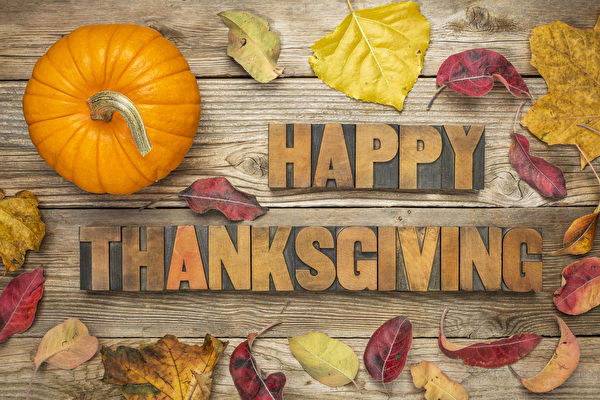On Monday, October 14th this year, Canada celebrated Thanksgiving, prompting the often-asked question from Americans: Why do Canadians celebrate Thanksgiving in October instead of November?
The United States and Canada share a close relationship as neighboring countries, aligning on many holidays including Easter, Christmas, Labor Day, and even daylight saving time changes. However, the timing of the seemingly common holiday – Thanksgiving – differs between the two countries.
In Canada, Thanksgiving falls on the second Monday of October, while in the United States, it’s observed on the fourth Thursday of November. This difference has long puzzled Americans, who wonder why Canadians celebrate Thanksgiving in October and how their traditions diverge from those in the US.
According to Andrew McIntosh, the senior thematic editor at the Encyclopedia of Canada, historically, Canadian Thanksgiving typically takes place in October before the onset of cold weather, celebrating the autumn harvest and giving thanks for the food it provides.
“Winter comes much earlier in Canada, so our harvest season is also earlier,” he explained. “In 1957, Canadian Thanksgiving was set on the second Monday of October, when the weather was still conducive to outdoor activities.”
Looking back in history, Canada’s first official Thanksgiving holiday was in 1879, and in the following years, Thanksgiving did not consistently fall in October.
“The specific date each year was determined by Parliament, which also designated a unifying theme each year – often centered around celebrating the monarchy,” McIntosh said.
Interestingly, he noted that Thanksgiving in Canada has been held as late as December 6th, occasionally coinciding with the American Thanksgiving.
Today, some Canadians opt to observe Thanksgiving with a big meal on the Sunday before the official holiday to accommodate those traveling over the long weekend, including Americans, without needing an extra day off work.
So, what do Canadians traditionally eat on Thanksgiving? It appears to be quite similar to the Thanksgiving spread on American tables on November 28th. McIntosh explained that this is due to a significant influence of American traditions on Canadian cuisine.
“Canadians draw heavily on the traditional Thanksgiving dinner of the US,” he elaborated.
“The traditional Thanksgiving meal includes turkey, gravy, potatoes, pumpkin, and bread rolls, served with cranberry sauce, with pumpkin pie as dessert, which is common across Canada.”
However, given Canada’s multicultural makeup, each cultural group brings its own cooking style to the Thanksgiving table, resulting in some culinary variations.
In Newfoundland, Canadians might swap turkey for Jiggs dinner, a dish of salted beef with boiled cabbage, peas, and root vegetables.
In Western Canada, McIntosh mentioned that some people prefer ham and serve Brussels sprouts as a side dish.
“Many ethnic groups typically incorporate some of their traditional dishes,” he added.
“For instance, Indigenous peoples often include bannock (a type of fried bread), while perogies and cabbage rolls are staples for many Ukrainian-Canadian households on Thanksgiving.”
Regional differences in Canadian Thanksgiving often revolve around post-meal desserts.
Similar to the US, pumpkin pie remains a staple dessert in most parts of Canada. However, McIntosh pointed out that in Quebec and the Atlantic provinces, individuals celebrating Thanksgiving tend to favor apple pie or apple crisp.
“In Ontario, they love their butter tarts – mini pecan pies, who wouldn’t love that! And out West, Nanaimo Bars are a favorite,” he added.
Nanaimo Bars are a no-bake dessert comprising three layers: a base of chocolate coconut graham cracker, a custard butter icing filling, and a chocolate ganache topping. Each layer offers a distinct flavor and texture, making it a uniquely Canadian treat. This dessert is named after Nanaimo, a city in British Columbia.
In predominantly French-speaking Quebec, McIntosh shared an interesting fact: most Quebecers do not even celebrate Thanksgiving.
“At the end of the 19th and beginning of the 20th centuries, Canadian Thanksgiving was primarily a Protestant affair, often used to give thanks for the British monarchy – factors that alienated the Catholic French Canadians,” he explained.
“Anglo-Quebeckers, the minority in Quebec, do celebrate Thanksgiving, but the immigrant community in Quebec tends to follow the standards of French Canadians,” he added.
In the US, a major highlight of Thanksgiving is the Macy’s Thanksgiving Day Parade in New York City. However, Canada does not host any celebration on such a large scale.
What about shopping? McIntosh pointed out that “Canada’s relationship with Black Friday shopping is not as strong as in the US, where Black Friday is the biggest shopping day of the year.”
In fact, Canadian stores typically remain closed on Thanksgiving Day.

